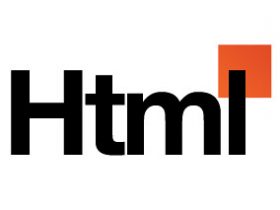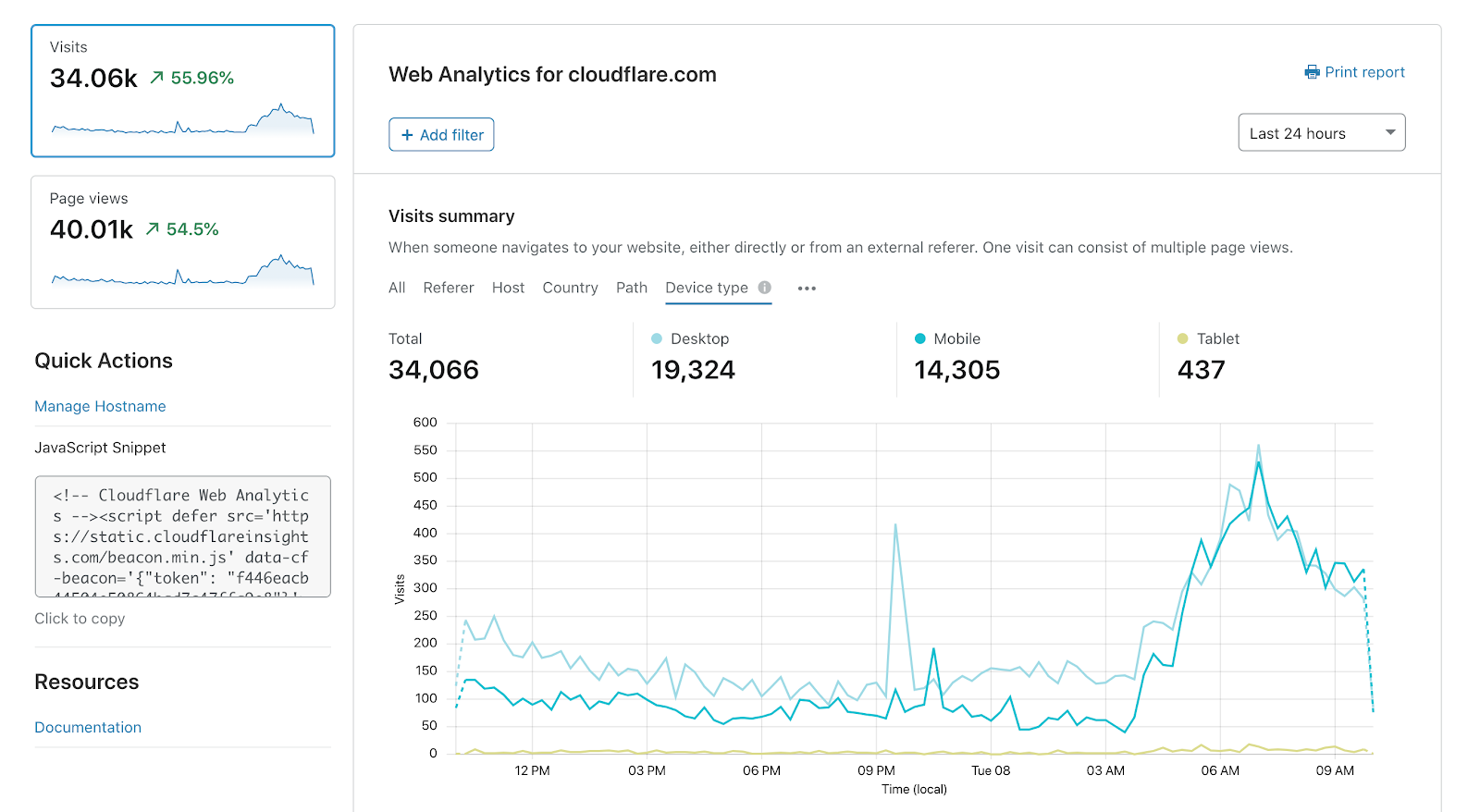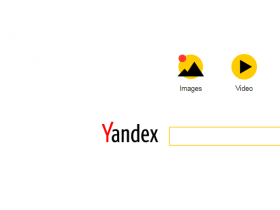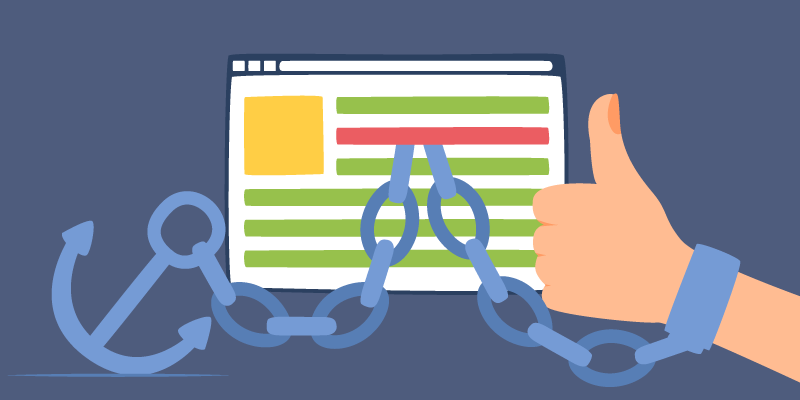Anchor Text SEO Guide
What are link anchors and how to choose anchor text for SEO in 2020.

In this guide, we will understand what anchor text is and how you can work with link anchors so that it is useful and relevant for promotion. The first paragraphs of the article with basic knowledge will be relevant to beginners.
In the manual:
- What is anchor text
- Why anchor text is important for SEO
- What are anchor text: 9 types of anchor text
- What anchors to use for links
- Where to post links with anchors
- Anchor Cycle Strategy: How to Rank with Fewer Backlinks
- Re-optimization of anchors: PS ratio and risks
Marketer and SEO specialist Nathan Gotch compiled Anchor Text: Definitive Guide , the PR posting team made the translation, and we adapted and refined the article.
What is anchor text
Anchor text is readable and clickable text in a link. In HTML format, it looks like this:
<a href="https://seonewsjournal.com">seo news</a>The definition of “anchor text” applies to all links, including internal and external. This tutorial will focus on external anchors.
Anchors SEO history in a nutshell
All you had to do to get ahead quickly in 2011 was create links with keyword-rich anchor text. An example of that time:
But on April 24, 2012, Google announced the launch of the first version of the Penguin algorithm update . From that moment on, when using anchor text with a large number of keywords, the site’s rank dropped sharply in search results.
Why anchor text is important for SEO
Anchor is one of the indicators that a search engine uses to determine relevance.
Google has a patent for “indexing anchor tags in a search engine”:

If you wade through the jungle of technical terms, the idea is clear:Google uses the text around the link and the anchor text to determine the relevance of a link
.
Using this, you can build relevance without exact occurrence. Post links in relevant content and put your main keyword next to your link.
What should be done:
- Find relevant sites in your niche.
- Get backlinks in content relevant to your landing page.
- Try placing your main keyword next to your link.
- Use logical anchor text.
Examples for the keyword “anchor text”:
- “If you’re looking for more information on anchor text, click here .”
- “Anchor text is the visible and clickable text in a link. More on this in the article PR-CY . “
- “To understand the topic of anchor text, I recommend this article: https://pr-cy.ru/news/p/8215-polnoe-seo-rukovodstvo-po-ankornym-tekstam ”.
Before we see the optimization tricks, let’s go over the basics. The first thing to know is the types of anchor texts you can use.
What are anchor text: 9 types of anchor text
The author of the original article Nathan Gotch identified nine types of anchor text, from the safest in terms of promotion to the least secure:
1. Branded anchors / Brand anchors / Brand anchors
Brand anchors are any text that uses the name of your company or site. “Follow the positions of your project in search engines using the LINE service ”
Branded anchors are the safest type of link text if your site has a branded domain. If the domain is an exact or partial match, you should be careful. More in the next paragraph
2. General anchors
General anchors often call for action: “go here”, “click on the link”, “on this site”. In the sentence “ Come here if you are looking for information on SEO”, the phrase “Come here” is generic anchor text.
3. Anchors are bare links
Any anchor containing an open URL is considered a bare link: https:/seonewsjournal.com/, www.seonewsjournal.com/, seonewsjournal.com.
4. Anchors without keywords
This is how it looks:

The easiest way to create an anchor without text is to use images. This is a little strategic trick that big brands often use. It doesn’t matter if they do it on purpose or not, it’s a good idea.
5. Links from images without anchor text
Google uses the image’s ALT attribute as the anchor text for the linking image.
6. Brand + anchor with a keyword
You can diversify your anchor profile by combining your brand name and target keyword, for example:
7. Keyword variations
To increase the thematic relevance of the page, it is worth diversifying the profile of the anchor text with different variants of keywords on the topic.
Examples for the target keyword ” backlinks “:
- what are backlinks;
- how to get backlinks;
- free backlinks.
8. Anchor texts with partial occurrence
Partial match for anchors is similar to keyword variations. The main difference is that you add generic words around the main keyword phrase.
Examples of target keywords for anchor text:
- anchor text guide;
- detailed article on anchor text;
- read this post about anchor text.
9. Anchor texts with exact occurrence
Exact match anchor text is an exact match of any target keyword and landing page. For example, if “buy backlinks” is the target keyword, then it will also be the anchor of the exact match.
Anchors with an exact keyword match are the most effective, but the most insecure. They can boost your rankings, but they can also lead to search engine penalties.Read on:
SEO and natural links: link promotion in Google and Yandex
What anchors to use for links
There are three things to pay attention to:
- Relevance
Anchor links and the surrounding text must be relevant to each other, as well as to the topic of the site on which they are located and the site to which they link. - Natural sounding in the text The
artificial sounding of the anchor will be a negative signal for the search engine. The algorithms understand the morphology of words, so they recognize where the text is constructed unnaturally. The phrase “men’s jackets price” should sound like “men’s jacket prices.” - Percentage of anchors
In the distribution of different types of anchors, it is better to keep a balance so as not to get punished by the PS. No one has exact recommendations with percentages based on the opinion of the PS, but optimizers come to understand in practice.
Safe anchor percentage: what anchor indicators should SEO be targeting
These indicators are not the law, you can experiment and do what is best for your situation. Nathan Gotch derived these relationships from his own experience, they help him avoid penalties and get results without risk:
- anchor text with brand mention – 70%;
- Anchors with bare links – 20%;
- shared anchors – 5%;
- anchors with partial occurrence – <5%;
- anchors with exact match – <1%.
Percentage of anchors for domains with exact and partial matches
Nathan advises newbies to avoid exact or partial domains. The reason is that they are very easy to over-optimize.
If you have an exact match domain, he advises you to focus on the following coefficients:
- bare links – 70%;
- general – 20%;
- LSI – 5%;
- partial entry – 1–5%;
- anchors with brand / exact match – 1-5%.
There are several nuances here:
- Reduce the percentage of “branded” anchor text, because exact match domains (EMDs) aren’t really branded – they’re just keywords in the domain.
- Increase the number of links without text and generic anchors, which helps to combat over-optimization.
Anchors of the second and third level
Some SEOs use multilevel link building for promotion on Google. It is usually not used for Yandex. The scheme looks like this: there is a main monetized site, links lead to it – this is the first level. Links that lead to these links are second. And so on, this is done to leverage posts that share link power with the site being promoted. An example is links from PBN to guest posts.
For anchors of the second and third levels, the author allows more keywords.
For the second:
- bare links – 40%;
- general – 30%;
- LSI, partial compliance – 25%;
- exact match – 5%.
Concentrate keyword anchors on the best placement resources.
For the third level:
- bare links – 10%;
- general – 10%;
- LSI, partial entry – 50%;
- exact entry – 30%.
Where to post links with anchors-Anchor Text SEO
The placement of each link requires attention. Types of links and anchor text that the author recommends using:
Link anchors for the best sites
At the best sites to place, concentrate anchors with exact and partial occurrence. The best are usually those where it is difficult and expensive to accommodate.
1. Guest posts on relevant resources
If you can place a link in your niche-relevant content, use keyword-rich anchors.Read on:
How to choose guest sites
If you can only get a link in a biographical article, use brand anchors (or non-optimized ones). Google has long struggled with the practice of hosting guest spam. And one of the signals about this is when people fill up authors’ biographies with anchor words with keywords.
2. Specialized pages
Specialized pages are a great opportunity to place links with text containing keywords with exact or partial occurrence.

Using your website title is also an effective and safe solution.
3. Private Blogging Networks (PBNs)
There are SEOs who don’t believe in the effectiveness of PBN, but there is another opinion. If you are working with site grids, use links with exact or partial occurrences.Read on:
10 Satellite Sites Promotion Experiments (PBN)
Anchors for other sites
All base (unedited) links must contain unoptimized anchor text. Use only brand anchors, bare links or generic anchors for links on these sites:
- paid catalogs;
- traditional catalogs;
- business links;
- press releases;
- comments on blogs relevant to the niche;
- forums;
- site sidebar or links in the footer;
- links to profiles;
- social bookmarks;
- donations, sponsorship.
Some people follow the anchors manually – if the site is small, it will be easy to enter the anchors of the links being placed in a Google Sheet or Excel file. If this is inconvenient, there are special services for monitoring the anchor list.
Next, let’s take a look at the strategy that the author of the guide developed to create a natural anchor text profile.
Anchor Cycle Strategy: How to Rank with Fewer Backlinks-Anchor Text SEO
Optimizer Nathan Gotch came up with this strategy and uses it in his projects. The strategy consists of four steps, and on the diagram it looks like this:

Step 1. Promote your landing page with exact match anchors
Start with multiple anchors with target keys. You may wonder: “Isn’t it dangerous to use an exact match anchor for a new site?” The optimizer thinks not. Websites penalize for linking profiles in general, not just one or two links. It’s like saying that one dinner at McDonald’s is the cause of someone’s overweight. Obesity is the cumulative effect of poor diet over time, and so is the link profile.
The author uses an exact match anchor for the first backlink for two reasons:
- see how the site will react;
- Show search engine bots what the site or landing page is about.
Step 2. Promote your site with non-optimized anchors with all mentions
Use brand mentions, naked links, generic anchors, and various keyword variations at this stage.
Step 3. Monitor rankings and track progress
You can get enough information about your work within one to three months. If the page doesn’t grow, you need to re-evaluate it. You may find that you need to use less anchor text with the best possible match.
Often the pages don’t work because:
- the site is not strong enough;
- there are not enough backlinks on the page;
- you have low quality backlinks;
- the page is poorly constructed
If you feel like you are 10/10 on these three dimensions, move on to the next step.
Step 4. Promote your site with other exact match anchors (if necessary)
Repeat this until you reach your rating. The essence of the anchor cycle is to create a diverse and natural profile of link texts.
The secret to a natural anchor profile is to avoid templates.
Take a look at these two examples:
Site # 1 is the typical link profile you’ll see on a site with anchor spammed content.

Google’s algorithm can easily decide that the site is creating artificial links. You don’t even need a manual check.
Site # 2 has a natural and varied link profile.

Although it has fewer backlinks and less keyword-richness, it will likely outperform site # 1 in the rankings.
We cannot vouch for the result of using Nathan’s strategy on your site and would read your opinions with interest in the comments.
Should you copy your competitors’ Anchor Text SEO strategy?
As a first step in working with anchors, expert Matt Diggity recommends determining the ideal anchor distribution for your niche. That is, you need to look at the percentage of anchor text among the rated competitors and do the same.
This approach can be applied, but there are a number of problems.
- Copying only part of the anchor text of an authoritative site is risky.
Authoritative sites are more trusted, so they can have a higher percentage of keyword anchors. If you copy this approach, you will most likely lose your rankings. Your site simply doesn’t have enough credibility and credibility to do this. - The percentage of anchor text on the entire site is not taken into account.
How do some sites manage to avoid over-spamming anchor text with exact match? Because they have authority and trust, and there is also a high percentage of unoptimized anchors in the site’s profile.
For these two reasons, you shouldn’t copy competitors’ anchors page by page – you need to simulate the entire profile of text anchors. If you don’t have authority, trust, and unoptimized anchor text all over your site, then you shouldn’t be repeating strong competitors on this issue.
Re-optimization of anchors: PS ratio and risks
On a site that has fallen under the filter, the first step is to analyze the link anchors. Most sites under the filters have an aggressive strategy of placing anchor text with commercial key entries.
Google is no longer updating the Penguin and Panda algorithms, but the concepts are still applicable. The main signal for manual overlaying of “Penguin” is anchor overspam. Using backlinks with commercial or other keywords will most likely result in a manual filter.How to remove a manual filter, we described in the article ”
Search Engine Filters. Google “. There is the same one, but
Search engines rarely punish sites just for overly optimized link anchors. Usually aggressive anchor copy strategies are often accompanied by other bad SEO practices.
In theory, you can go overboard with anchor optimization and not get penalized if everything else is okay. But this rarely happens. Websites are punished for doing a lot of things wrong.
Most sites with overly optimized anchors have poor quality links and content, poor user experience, and are often too aggressive in page optimization. To solve these problems, an SEO audit is required.
Check your site for 70+ parameters using the Site Analysis service : it will check optimization, links, meta tags, texts, loading speed, technical parameters, usability, and more. Looks for errors on the main and internal pages, and also in it you can track the positions of pages in search engines.
What does the search engine think about changing the anchor of the link
If you want to get Google’s attention, replace the non-keyword anchor with a target keyword. This is how Google might consider the link to be spam. Or maybe not, but you shouldn’t risk it. It is better to leave the link as it is, and find another place for the anchor with a commercial key.
Situations that do not cause concern:
- Replacing keyword anchor text with non-optimized text.
Reducing the number of commercial anchors can increase your rankings if there are too many of them. If anchors with exact match or multiple keys are greater than 25%, it may be worth replacing some of them. - Removing the link and placing it in another part of the article.
If you decide to change the link, post a new one elsewhere in the article. When you do this, the anchor / link will “refresh” in the eyes of Google. You will lose the old link, but you will gain a new one. However, the referenced text should only be changed as a last resort.
Do I need to reject links from SEO attacks?
Google automatically ignores link spam, as John Mueller talked about, so you don’t have to do unnecessary work and disavow spam links through Disavow Links.“We take this into account and try to automatically ignore such links. I see very few people with linking issues, so this works well. If these are just spam links, then I wouldn’t bother with them.If you are anxious, sleepy about these links and want to make sure Google is handling them properly, then use the Disavow Links tool. This is not an admission of guilt, you are simply telling our systems that these links should not be counted for your site. “
The search engine spokesperson added that for most sites there is no need to reject spam, Disavow Links should only be used in really extreme cases. The search engine successfully detects spam links and ignores them.
How Past Sanctions Affect Website SEO
In general, there are two points of view. Optimizer Nathan Gotch believes that getting hit by the filter is like going to jail for a felony. While you might get out of jail one day, a felony will always be in your bio.“Do you really think that Google is erasing everything from a site that has previously been manually punished? Even if your fine gets canceled, your site’s ranking will never be easy and you will always feel like something is holding you back. “
In some cases, he advises creating a new site because he believes that it is not that difficult and much more cost effective than trying to get out of the penalties.
Google employee Gary Ilsh has a different opinion:“Rumors that manual sanctions will brand a site forever are just an SEO myth. Submit the resource for recheck and if everything is fine, you will be off our hook. “
That is, according to the PS employee, manual sanctions do not leave traces in the history of the site. If, after the removal of sanctions, the previous positions have not returned to the site, this does not mean that the past affects it so. Perhaps the search engine has changed the algorithms, competitors have made it to the top.
Which side are you on, what does your experience say? Write in the comments!
Anchor text is a very small piece in the SEO puzzle. Most sites are rife with SEO, SEO content and backlink quality issues. They need to be addressed first. Once you’re good at optimizing them, move on to the anchor text. This can give you an edge that allows you to dominate the competition.






Thank You for updating the excellent information, This website contains excellent information and is very precise in the subject, also this particular blog has provided immense amount of knowledge on the topic SEO attack and Re-Optimization